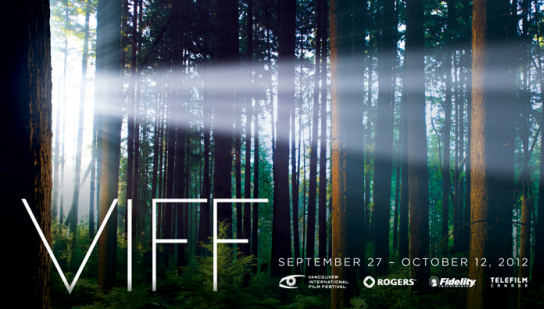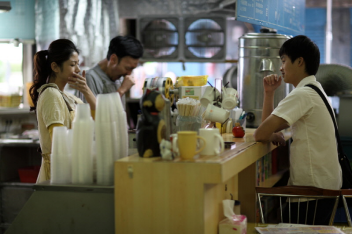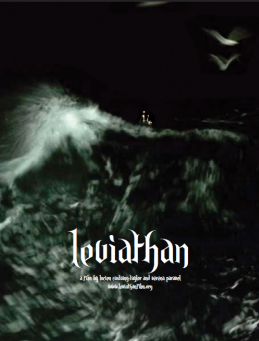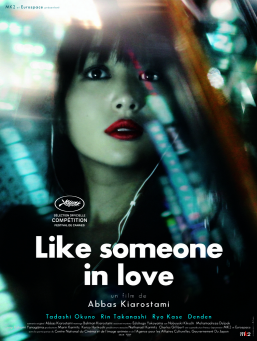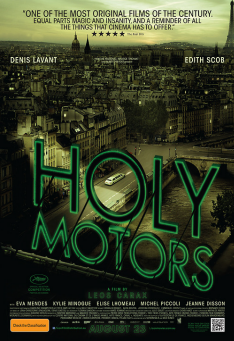By Michael Scoular (The Cascade) – Email
Print Edition: October 17, 2012
Together (Taiwan)
Violence inflicted by voices, letters, and an unforgiving shop class apparatus opens Chao-Jen Hsu’s Together. A detailed portrait of family, community, and generations living together but completely separate – “Bad kids” is one of the muttered words of reproach from one of the few wise townspeople – and from the title, introduction and the expectations of a domestic drama, it’s anticipated things will go in a certain way.
But Hsu doesn’t navigate these familiar streets in that simple a fashion. There could be said to be a central character, Xiao Yang (who, like all here, gives a loose yet focused performance, quietly attentive to all the details). But he’s more important for the way his actions expand and fan out into all the people surrounding. Xiao Yang doesn’t get any more screen time than any of the dozen or so main family members, friends, and otherwise Hsu weaves into Together. Plotlines emerge that could have made this a movie into one about a wedding, a divorce, or a coming-of-age story, but instead of relationships with a single, significant other, the overarching value of living with everyone—those dwelled on in resourceless love and ignored out of casual dismissal alike—is cultivated.
What further distinguishes Together‘s palette of personalities is Hsu’s direct, widescreen lensing, capturing an apartment, noodle shop or garage-aligned street corner in as unbroken a way as possible. The description that comes readily is non-judgmental, but it is clear there is judgment, that these people and others deserve respect and perspective. This stabilizing method deflates circular arguments, makes it causable that forgiveness of faults becomes not dramatic but the conditions of living in the town the camera has entered into, and more likely for lightly touching comedy or sadness over hammering narrative points to enter into view. Part of Hsu’s deftness with this material is owing partly, no doubt, to Hsu’s tutelage under Edward Yang (a fact only gleaned from Shelly Kraicer’s program notes – Hsu’s film appears to have arrived at VIFF relatively unheralded), but as this film exemplifies, assigned positions and passed-on letters can not alone explain the far-reaching ways these simply-describable actions can be transformed through shared experience.
Leviathan (UK, France)
Leviathan is a documentary co-directed by Lucien Castaing-Taylor and Véréna Paravel, and it—at least when described in a distanced, need-to-be-topical way—is a condensed catalogue of the catching, gutting, enduring process of oceanic fishing in three movements. Leviathan keeps the long takes and isolated subject of Castaing-Taylor’s Sweetgrass (co-directed with Ilisa Barbash), but with the shift from solid ground to dark and unstable water, Castaing-Taylor and Paravel not only turn the camera into an active, sometimes ceaselessly moving impossible extension, but upset preconceived notions of the immediate area and its travelers by wrenching images, sounds, and their absence from just about everywhere – only sometimes including eye level. This is not the experience of being on this vessel in these conditions over this period of time, but an abstracted view of a shifting surface, its underneath and exploding contents, in an indeterminate, crashing concept of the passage of minutes or hours, or who knows how long.
As later scenes show, Castaing-Taylor and Paravel have the ability to show the layout of things in longshot, steadily as observers, with the sound dialed back and everything safely at a distance. But Leviathan is instead marked by assaultive camera and sound work – not as a derogatory, but as methodology. Plunging, sliding, whip-panning in the dark and deck and drowning expanses, Leviathan has so many visuals to bump up against it’s a wonder it coalesces into order. But it does – the sequence of fisherman routine becomes the only thing to acclimate to, even as that too changes and is never represented the same way twice. In its most straightforward capturing of bloodletting—undesirable inedibles hacked off, gathering, spraying on the indifferent ground in a machine-like calmness by bodies in motion to be revered and/or criticized in their perseverance—Leviathan recalls Franju’s Blood of the Beasts. But this is a small occurrence next to the more visceral decktide sweep of guts and heads into camera, or the night hauls, delimited vivid color immersed in crushed black – the appearance more of hand-painted Brakhage than reality construction. This suggestive, rather than indicative quality transforms the everyday, the accepted as organic, into the unsure realm of artistic possibility. One of the most lasting effects of Leviathan is in its sound design by Ernst Karel and Jacob Ribicoff: submerged bursts of pressure and oxygen, like fretboard squeaks turned manic and unfamiliar, the constant machinery and the quiet of the sky. This too seems like it is rooted in the naturally occurring, but bears an exactness, a precise viscerality countered barely by relief that conjures an off-kilter appreciation for nature, its manipulation, or something less easily defined.
Of the many paradoxical pleasures of Leviathan, this one remains: in the moment while watching, its agitated REM version of lurching reality seems more than enough for a lifetime. It’s enthralling images and hearing-loss inflicting noise should be indelible and lasting. But in the time since seeing it, Leviathan refuses to resolve itself in the mind. Its seed of furious commotion, wordless work is there undiminished, but its images, half-forgotten, half-formed already, beckon, to be explored again not out of reverence, but to explore in a way words can’t their interlocking, inexact relation between human and inhumane.
Like Someone In Love (Japan, Iran, France)
Like Someone in Love is the opposite of baffling. It invites reconsideration, resetting and, most of all, as in many of the films of Abbas Kiarostami, an entrance into the liminal space of the vehicle—glimpsed through windowed reflections and inner quiet, in between unknowable (pre)destinations—where moments of performance and contemplation are questioned and fleetingly rekindled.
To the people she knows, Akiko (Rin Takanashi) is a student, though the film never shows her in any institutional study space. By night, she sits at empty tables at a private club, waiting for clients while still trying to manage her public perception, whether it is to her insecure, suspicious boyfriend or unknowing grandmother. Her encounters with both, as well as an elderly sociology professor (her major) and his next door neighbor, are the four poles Akiko is pulled towards, into conversation and out of the definition of her public personae, over the roughly 18 hours the film spans.
Like in Certified Copy, Kiarostami’s long takes and discussions are transformed by the different cadences and new location – interrupted humour and one-sided cellphone conversations (the generational (our generation’s) divide) alike. But it goes beyond even that. Unlike the platonic dialogue of his previous film, here conversations—untranslated but not unimportant—overtake our field of sound, mixing or taking more prominence in Reza Narimizadeh’s sound editing. The most recent comparison point might be the extended cut of Kenneth Lonergan’s Margaret, but the distinction here is how these voices are alternatively shut out into muffled distance or midnight silence, a pointed illustration of the division of public and private life, though intrusions, breaking down this division, do occur.
With this point in mind, one of the inquisitive spirits of Like Someone in Love might be the one related to acting – Takanashi is expected to be, but how much of this is performance, and how much has this spread into her life outside of her work? Again as in Certified Copy’s example of Juliette Binoche and William Shimmel, (Kiarostami’s two foreign excursions might come apart, be able to be seen as completely separate and different from another over time, but for now they seem to follow naturally from one another) despite using trained actors there is the tenor of unadorned portrayal of the self – Takanashi in the film’s opening scene or Tadashi Okuno, playing the professor, shuffling around his study. But as dialogue and storytelling spilling out from characters takes over, identification and responsibility develop and mutate. Nearly every sentence seems to be a turning, a divergence, leading to breaks and abrupt disconnections that shatter the sensible multidimensionality of Kiarostami’s construction and turn it over to the unpredictable public sphere.
Holy Motors (France)
Holy Motors literalizes the star vehicle, placing Denis Lavant in the actor’s limo’s chair with nine scripts in one day and Edith Scob as chauffeur. Like the most vital pieces of the French New Wave, Holy Motors is a piece of filmmaking as creative criticism, a direct address to what is currently valued in cinema by general moviegoers and, opposing this, director Leos Carax. While placing his film in a position against an audience (the opening is of one asleep, dead to anything but perfunctory function), Carax in a way trusts and plays off the familiarity an audience has with familiar narratives: deathbed sentiment, unknowing adolescence, fantasy violence, and so on, using this to then go off the deep end of intensified discontinuity.
Surrounded by vicious satire, outrageous release of irritation, and mockery of hypnotic convention, the nucleus of Holy Motors, though superficially changing, remains the same. While in many ways a contemptuous reaction to problems that have always been endemic in film culture, Holy Motors is above all an attempt at the defence of romance, either by deriding twisted, lazy forms of this, or bringing actorly commitment into focus. All nine of its extent parts communicate this, but perhaps none clearer than the undeniably beautiful entr’acte, separate from the others in that it holds back, for just a moment, in narrative demolition and audience recalibrating of the most forceful kind. As yet another changeably talented physical exultation of acting, Denis Lavant takes up instrument, and following several solitary acts, is surprisingly joined by other joyous performers. The intermezzo lasts only two weaving, concentrated shots, but contains in it all the ecstasy of a creative act – all the more because it comes in relief of conflicted, exhausting genre commitments.
At one point, Lavant is questioned, asking if by preferring a more pure, simpler type of camera-actor relationship, he’s being overly sentimental and nostalgic. What Carax proposes in diverse, divisive delivery, is not simply that things used to be better, but that whether its an actor so immersed in assignments acting never begins nor ends, cameras that can capture everything without end, and deadened movies released to dumbstruck audiences in unending plethoras, this only obscures the true potential of cinema. Refusing to ignore lives over brands, valuing loving detail of moving bodies over fake, reconstituted sensation, and wrapping passion in framing that exposes juvenility as a scourge against the relentless desire to create, Carax does not declare that film is dead as so many are, but that it is living, and we are too often dead to it.
In the days preceding this, as it turns out entirely appropriate, closing film, the main hub of VIFF and last evidence there ever was a Theatre Row, the Granville 7, was announced as closing November 4. Predictable and expected, but no less a major blow to VIFF and other Vancouver film festivals, it’s yet another movement toward cold, monolithic quasi-futuristic-looking multiplexes that overcharge, blare constant advertisements and occasionally show movies being the only theatres of non-choice. But it is not all dire. VIFF’s VanCity Theatre and repertory haven the Pacific Cinémathèque will continue their excellent year-round programming, and VIFF, in whatever form, venue, size, will continue to be the highlight of BC’s filmgoing year. No thinkpiece in Salon or The New Republic can change that.

